While Australia is known for being the top exporter of goat meat in the world, it may be a surprise to some that the U.S. is the largest importer of Aussie goat meat, and most of these goats are from feral herds.
From a global perspective, Australia exports 31% of the volume of goat meat to other countries, including the U.S. This is about 21,058 U.S. tons of frozen goat meat, which accounts for 44% of the value of the global export market for goat meat. Australia’s share is roughly equivalent to $182 million (U.S.).
Table of contents
Here’s how the U.S. importation of Australian goat meat breaks down:
- The U.S. is the top customer of Australian goat meat
- The U.S. accounts for 57% percent of the goat meat coming out of Australia
- Imports are about 13,784 U.S. tons of frozen goat meat
Australian goat meat is most commonly coming into the U.S. as carcasses or whole primals, which is typically the harvested goat ready to be broken down by a meat cutter, butcher, or chef.
On average, the goat carcasses exported are 37 lbs. (17 kg). Using rough math based on carcass weights and export volumes, Australia is roughly exporting 27.6 millon head in frozen carcasses to the U.S.
So one might ask, where is all this goat going to in the U.S., when goat meat is still hard to find in most grocery stores? The majority is going into the retail/food service industry, which means restaurants, grocery stores, and facilities that serve food, such as hotels or event venues. The grocery stores that carry this goat meat are more likely to be in larger metropolitan areas where there is a diverse population, therefore a more consistent demand for the meat.
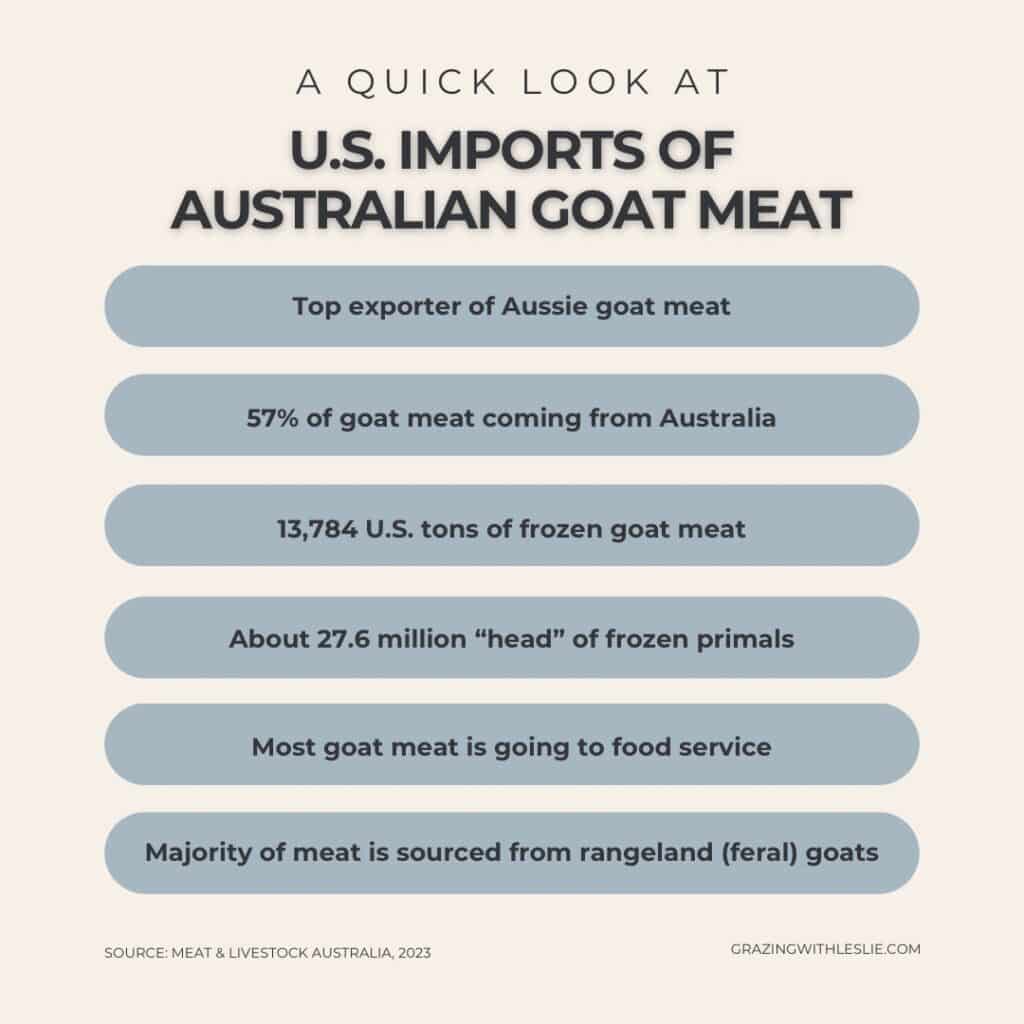
Statistics referenced in this section are from Meat & Livestock Australia (2023).
Retail example of Aussie goat meat in the U.S.
One place locally where I’ve seen Australian goat meat is at the Costco Business Center in Minneapolis. They’re selling whole primals (carcasses) hanging on the hook in the freezer, along with boxed stew meat, commonly called cubed meat or curry cubes. As in wholesale style, it’s all bulk targeted to the small business owner rather than the typical Costco Warehouse member. However, any member can shop at the Business Centers.
If you ever see the price of the goat, you’ll likely be shocked at the low price per pound. My daughter sees a specialists at pediatric clinic nearby the Business Center in Minneapolis. The last few years we’ve made it an annual stop to see the imported goat meat in the cooler.
The last time we were there (February 2024) it was $3.29 per pound for a full primal ($110.22 for 33.5 lb.) and $62.49 for a 15 lb. box of goat stew meat ($4.17/lb.).
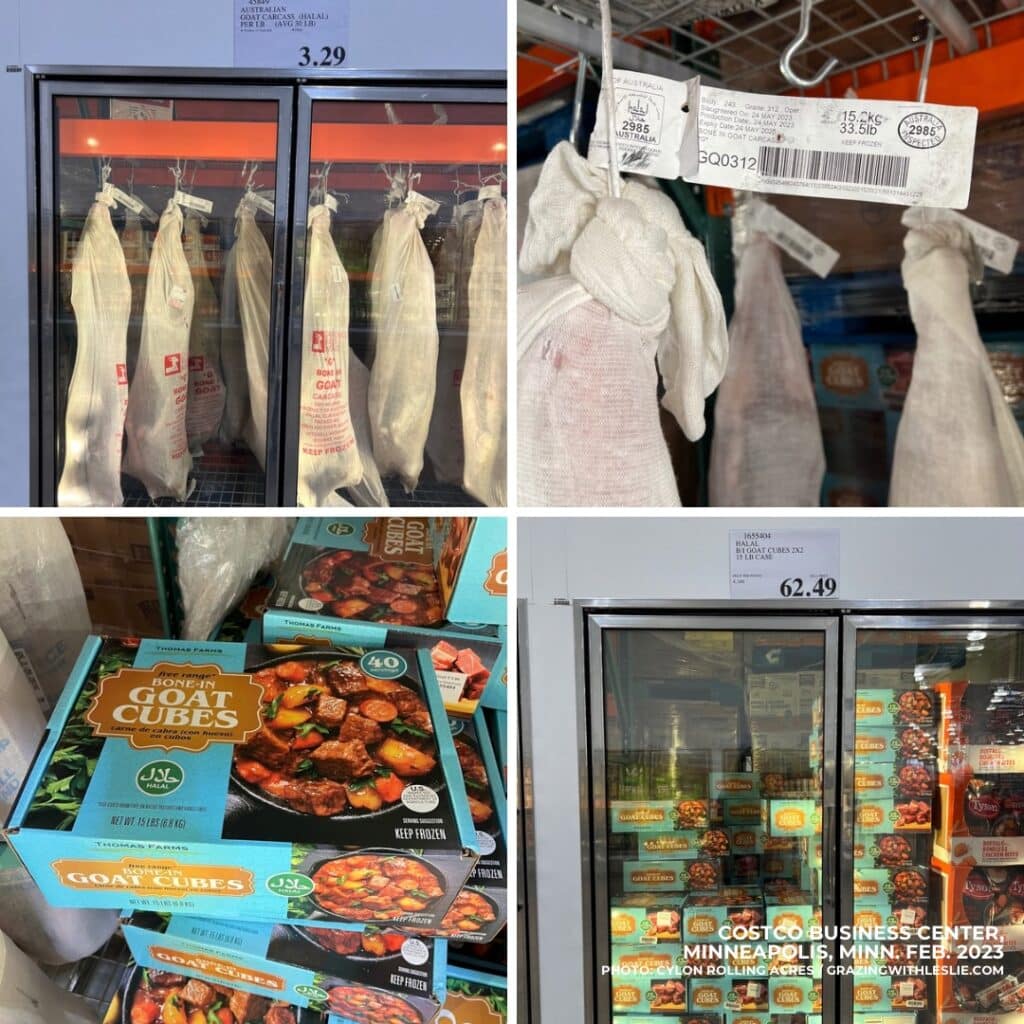
Photo: Australian goat meat for sale at a Costco Business Center in Minneapolis, Minnesota.
Feral goat herds in Australia
Australia Meat & Livestock reports that a majority of the exported goat meat comes from “rangeland goats,” which are feral goat herds (2023).
The origins of these goats go back to 1788, when early European settlers brought them to Australia. Goats were a good choice since they were easy to manage and produced both meat and milk.
Later in the 19th century goats were released in areas for emergency food. Since the last 200-plus years feral goat herds have grown and are considered an invasive species as they are degrading the Australian countryside.
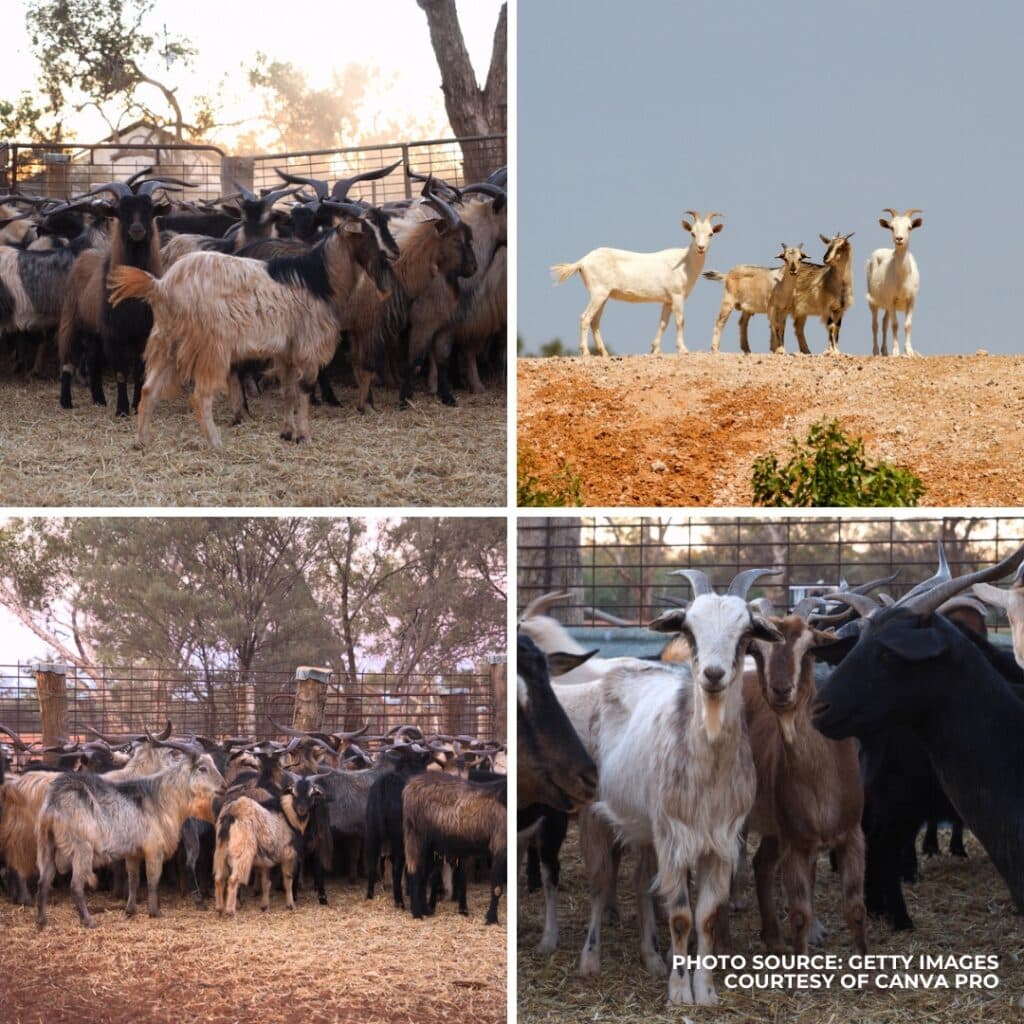
Photos: Feral goat herds in Australia. Photos courtesy of Getty images from Canva Pro subscription.
The Australian government approved the Environment Protection and Biodiversity Conservation Act 1999 to develop an “abatement plan for competition and the land decoration by unmanaged goats” (2011).
Recently the Guardian published an article highlighting Australia’s growing goat export business and feral goat problem: Goats of gold: Australia’s feral goat problem as become a $235m export trade. Note the headline references Australian dollars.
The article goes into more depth about the operations sourcing feral – or rangeland – goats, the market, and the impact of the feral goats are having on the agriculture industry and landscape.
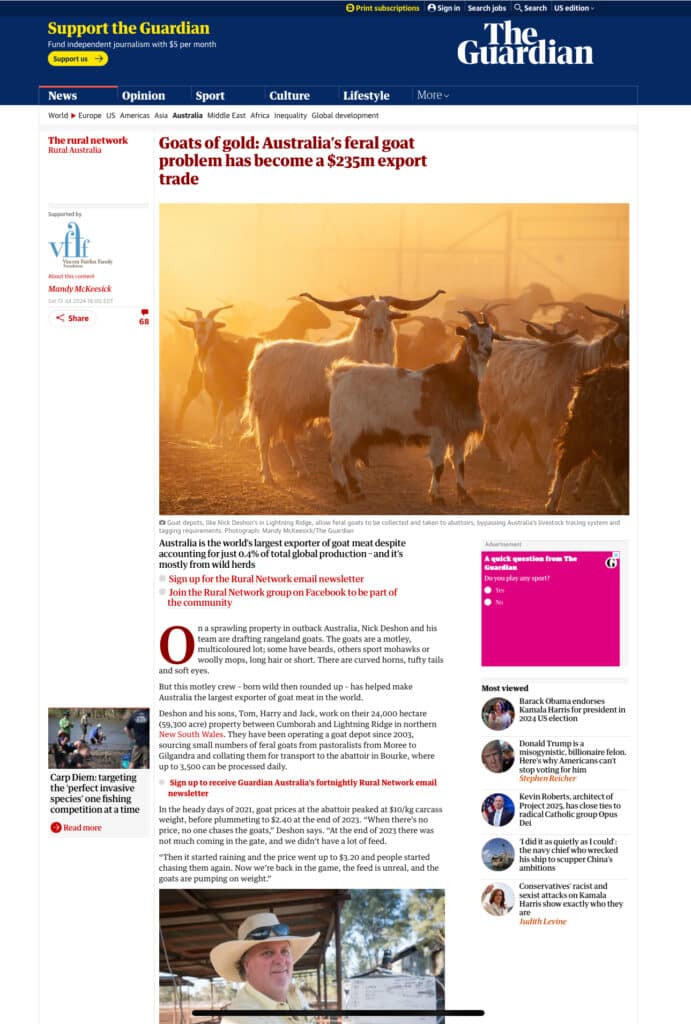
You can read the full article here.
Creating more demand for U.S.-raised goat meat
If you raise meat goats in the U.S., as I do, these numbers might be both impressive and intimidating. It’s impressive to see a strong goat meat market from an export standpoint. As well as see real proof of a growing market for goat meat in the U.S.
What’s a bit daunting about it, is the quantity of goat being imported into the U.S., as well as the price point of the Costco example given earlier. I tried to take into account the cost to raise or at a minimum capture and handle feral rangeland goats, harvest and package the goat, then ship it across the world from Australia to the U.S., and allow for some type of margin for all of those involved in the process, including Costco.
Even still, I believe we should be able to raise meat goats and sell the meat domestically. But, it is hard to compete with the prices you might see at a wholesale setting or what the food service industry can get from supplies.
We have to remember we can’t be everything to everyone. It’s about finding a place in the market that’s the right fit for our goat meat. This means understanding catering to the food service industry will be a tough space to operate in, especially if purchasing decisions are based on pricing alone.
However, there’s still an opportunity to work with food service and wholesale buyers who value direct relationships with farmers, locally or regionally raised, or even domestically in this situation, as well as emphasize on meat quality.
And, of course, there is plenty of opportunity to sell directly to customers from your own farm or collaboratively with other meat goat farmers/ranchers. But, it is important to understand the broader context of the market we operate in.
Lastly, this is also an opportunity for us meat goat farmers and ranchers to come together to increase awareness for goat meat with consumers in the U.S. and with the retail food service industry.
We are one of the few areas of animal agriculture that does not have a federal marketing order. In the case of lamb or beef, as an example, there are funds and staff designated to help promote the meat with consumers throughout the country. Our goat meat industry does not have this advantage, which also slows our own progress in growing our meat goat industry in the U.S.
References:
- Meat and Livestock Australia (2023). Global Snapshot Goatmeat. MLA Industry Insights.
- Australian Government. (2011). The Feral Goat (Capra Hircus) Fact Sheet.
- McKessick, M. (2024). Goats of gold: Australia’s feral goat problem has become a $235m export trade.
- Costco Business Center, Minneapolis, Minn. (February 2024).
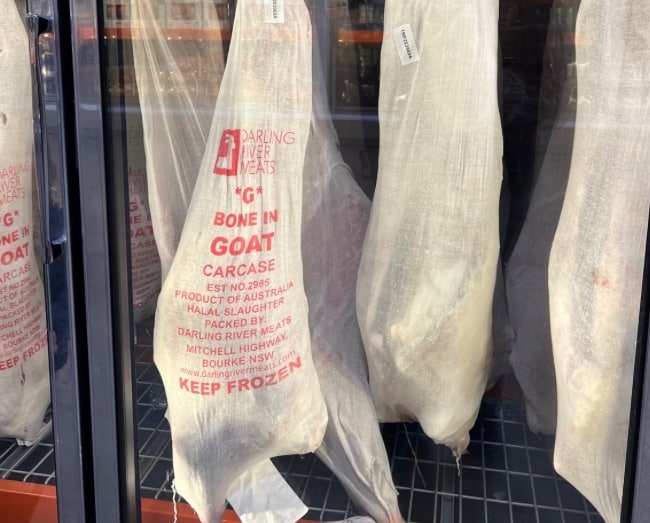
What breed are they
They are dependents of the early European Settlers in the late 1780s and have bred with other goats that have been let free or gotten loose. There really isn’t a set breed given the time the goats were originated on the continent. Maybe one could loosely associate them with Kiko since they’re a mix of several breeds and “indigenous” breeds of New Zealand, which is in a similar region. But it is a bit of a generalized stretch / guess!
Impossible to compete on price when a whole goat from Australia costs $110 at Costco. My local USDA processor charges $56 per goat to get then to hanging whole carcass.
I think it would be helpful to know how these goats are harvested. If on those big ships harvesting during the voyage there are some serious welfare concerns. Sadly their whole carcasses can be further broken down in the US and resulting packages labeled “Product of the USA”
Be careful what you wish for with marketing orders. It’s an additional cost and all about large commercial interests. Does not help me as a small lamb producer at all. The marketing order promotes lamb as a homogeneous product with no differentiation for special breeds, grass fed, humane treatment, etc.
Oh it sure is! Our USDA processing is more than that as well. I know many facilities that are $150-$175/head for processing! It’s hard to wrap my head around as well.
I hear you on the marketing board. I know many aren’t always happy with how funds are spent/used and being required to contribute, among other reason. But, really for our goat meat industry to take off more we need more broader promotion and education effort for goat meat for consumers and the food service industry. It’s just a big beast to deal with. But, it’s where we are at!
Thank you for the comments Lisa!
$4.99/lb for sawn frozen chunks here in Atlanta as of 3/8/25. P purchased 3.5 lb for ‘stew’.
I do not think US producers would have much trouble selling animals that have lead a more comfortable life. The ‘free range’ ‘whatever fed’ Australian goats require a long slow cook. Domestic goats that have been fed on quality forage and some grain are much more tender. I would gladly pay $10/lb for a tender kid or fetal goat.